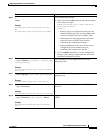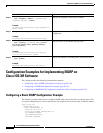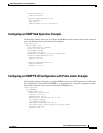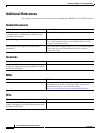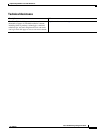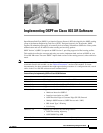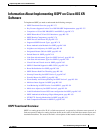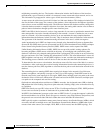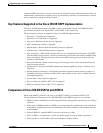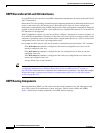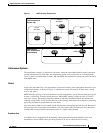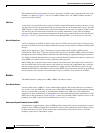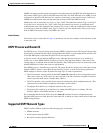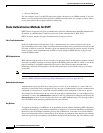
Implementing OSPF on Cisco IOS XR Software
Information About Implementing OSPF on Cisco IOS XR Software
RC-173
Cisco IOS XR Routing Configuration Guide
OL-14356-01
Information About Implementing OSPF on Cisco IOS XR
Software
To implement OSPF you need to understand the following concepts:
• OSPF Functional Overview, page RC-173
• Key Features Supported in the Cisco IOS XR OSPF Implementation, page RC-175
• Comparison of Cisco IOS XR OSPFv3 and OSPFv2, page RC-175
• OSPF Hierarchical CLI and CLI Inheritance, page RC-176
• OSPF Routing Components, page RC-176
• OSPF Process and Router ID, page RC-179
• Supported OSPF Network Types, page RC-179
• Route Authentication Methods for OSPF, page RC-180
• Neighbors and Adjacency for OSPF, page RC-181
• Designated Router (DR) for OSPF, page RC-181
• Default Route for OSPF, page RC-181
• Link-State Advertisement Types for OSPF Version 2, page RC-181
• Link-State Advertisement Types for OSPFv3, page RC-182
• Virtual Link and Transit Area for OSPF, page RC-183
• OSPFv2 Shamlink Support for MPLS VPN, page RC-184
• Route Redistribution for OSPF, page RC-186
• OSPF Shortest Path First Throttling, page RC-186
• Nonstop Forwarding for OSPF Version 2, page RC-187
• Graceful Restart for OSPFv3, page RC-188
• Warm Standby and Nonstop Routing for OSPF Version 2, page RC-190
• Multicast-Intact Support for OSPF, page RC-190
• Load Balancing in OSPF Version 2 and OSPFv3, page RC-191
• Multi-Area Adjacency for OSPF Version 2, page RC-191
• Label Distribution Protocol IGP Auto-configuration for OSPF, page RC-192
• OSPF Authentication Message Digest Management, page RC-193
• GTSM TTL Security Mechanism for OSPF, page RC-193
• Path Computation Element for OSPFv2, page RC-193
OSPF Functional Overview
OSPF is a routing protocol for IP. It is a link-state protocol, as opposed to a distance-vector protocol. A
link-state protocol makes its routing decisions based on the states of the links that connect source and
destination machines. The state of the link is a description of that interface and its relationship to its



